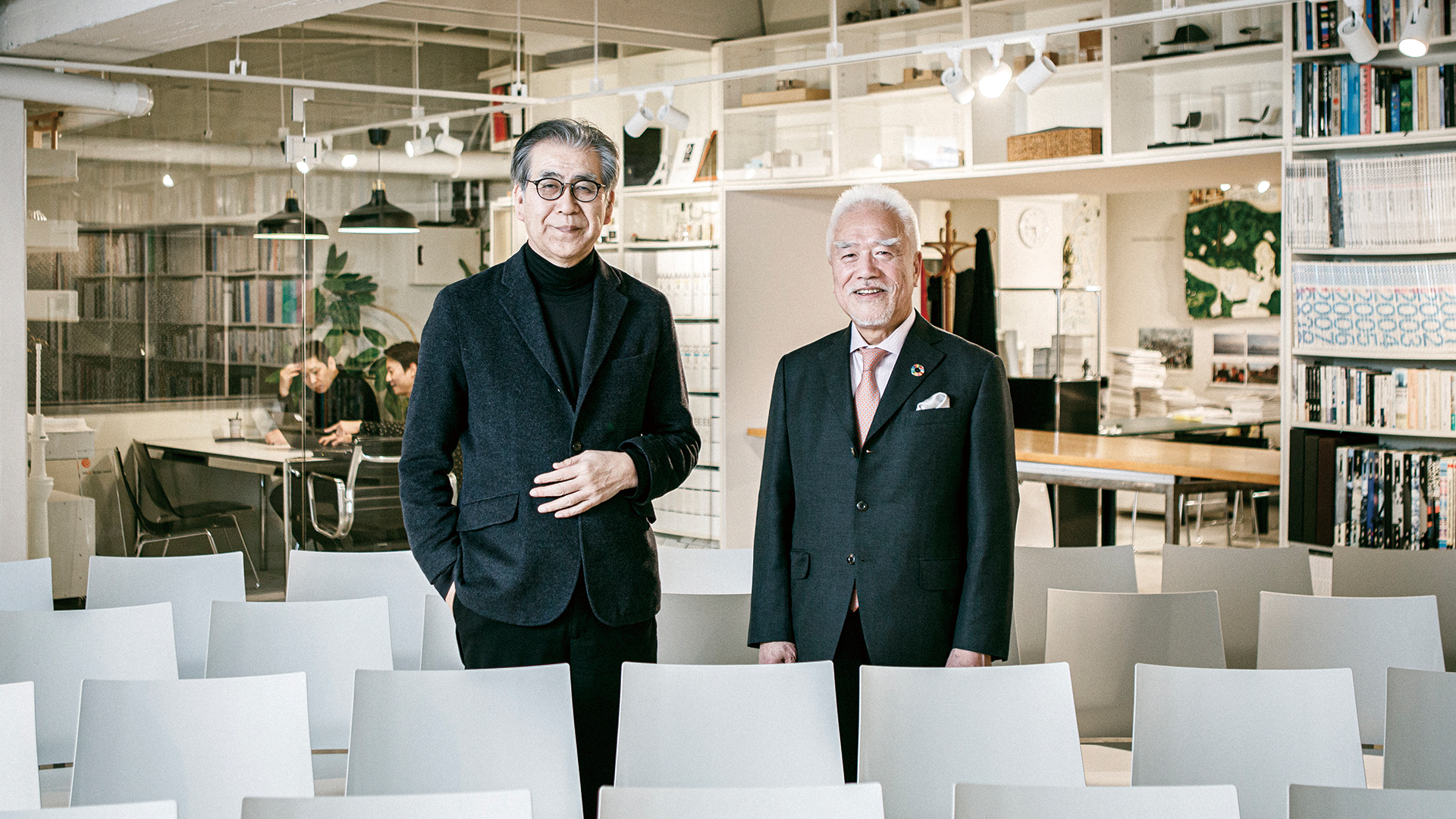
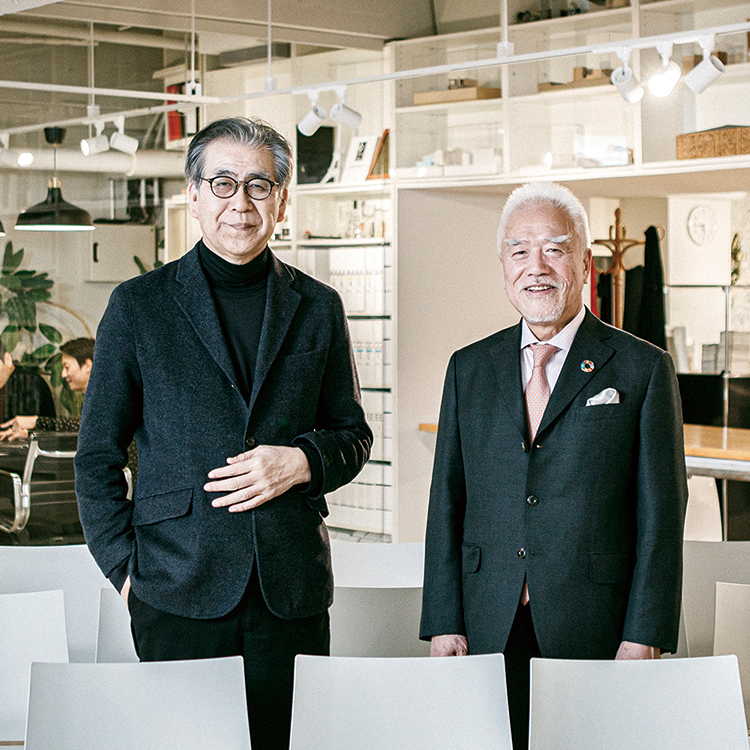


Junzo Tateno
CEO of UNION Corporation
Born in 1947, Junzo Tateno graduated from the Faculty of Law at Konan University (Kobe, Japan) in 1970
and entered Aoki Construction that same year. He joined UNION in 1973 and became CEO and President in 1990.
He serves as Chairman of the Union Foundation for Ergodesign Culture, a Public Interest Incorporated Foundation,
and the Osaka Industrial Bureau. He is also Vice Chairman of the Osaka Chamber of Commerce and Industry.
Fumio Nanjo
Born in 1949, Fumio Nanjo is a Japanese art critic, curator, and special adviser to the Mori Art Museum. He graduated from Keio University's Faculty of Economics and Faculty of Letters, Department of Philosophy with a degree in Aesthetics and Science of Arts before working at the Japan Foundation. After working as the director of ICA Nagoya and Nanjo & Associates (currently N&A Co., Ltd.), he became the director of Mori Art Museum in November 2006. He has served as a selection committee member and judge for various foundations and funds, and continues to be a leading figure in the arts and art industry.
12
TATENO
In the art world, it doesn’t matter how great a painting is if it never appears on the market.
NANJO
I saw an interesting movie recently. It was directed by Nathaniel Kahn and titled “The Price of Everything.” There are a lot of people out there wondering why art is so expensive. This documentary was made specifically with that question in mind.
TATENO
Is that right? You’ve got me intrigued.
NANJO
They interview a variety of people for the film, all of whom are involved in the art world. The American artist Jeff Koons as well as a number of famous auctioneers, gallerists, and collectors make an appearance.
TATENO
What did you think after watching that movie?
NANJO
I can’t describe it in a single phrase. I think the impression one takes away from the film is completely different depending on the viewer.
TATENO
Is that so?
NANJO
From a gallerist’s perspective art is a product; in the eyes of an academic, it’s a subject of research. To the artist, it’s both a product and a way of life. That’s why there’s no single answer. There are a lot of artists out there who claim not to care about price, though.
TATENO
You are an expert so I imagine you look at art from a wide range of perspectives. I’m an amateur when it comes to art, so I don’t know much about the details, but I have been collecting calendars showcasing the works of a variety of artists for the past 30 years or so. I recently put a work of Naoko Tosa’s on display, which was quite a hit. I just go with my gut and select artwork I find interesting. That’s to say, I like art, but I really don’t know why a Picasso painting, for example, fetches such a hefty price.
NANJO
It’s no simple matter of scientific deduction. Picasso was a prolific artist, which is why everyone knows him. Everyone knows that Picasso is the artist behind those strange paintings, and they also know that his artwork is expensive. In economic terms, if something is expensive, it is considered to have value. For example, a diamond doesn’t really serve much practical purpose, but everyone knows they are expensive, so by wearing one you are able to demonstrate your social status. Art is somewhat similar to this. If you have a Picasso hanging on your wall, everyone will stop and say “that’s a Picasso!” If some unknown young or modern artist’s work is on display, it becomes difficult for people to judge and evaluate it.
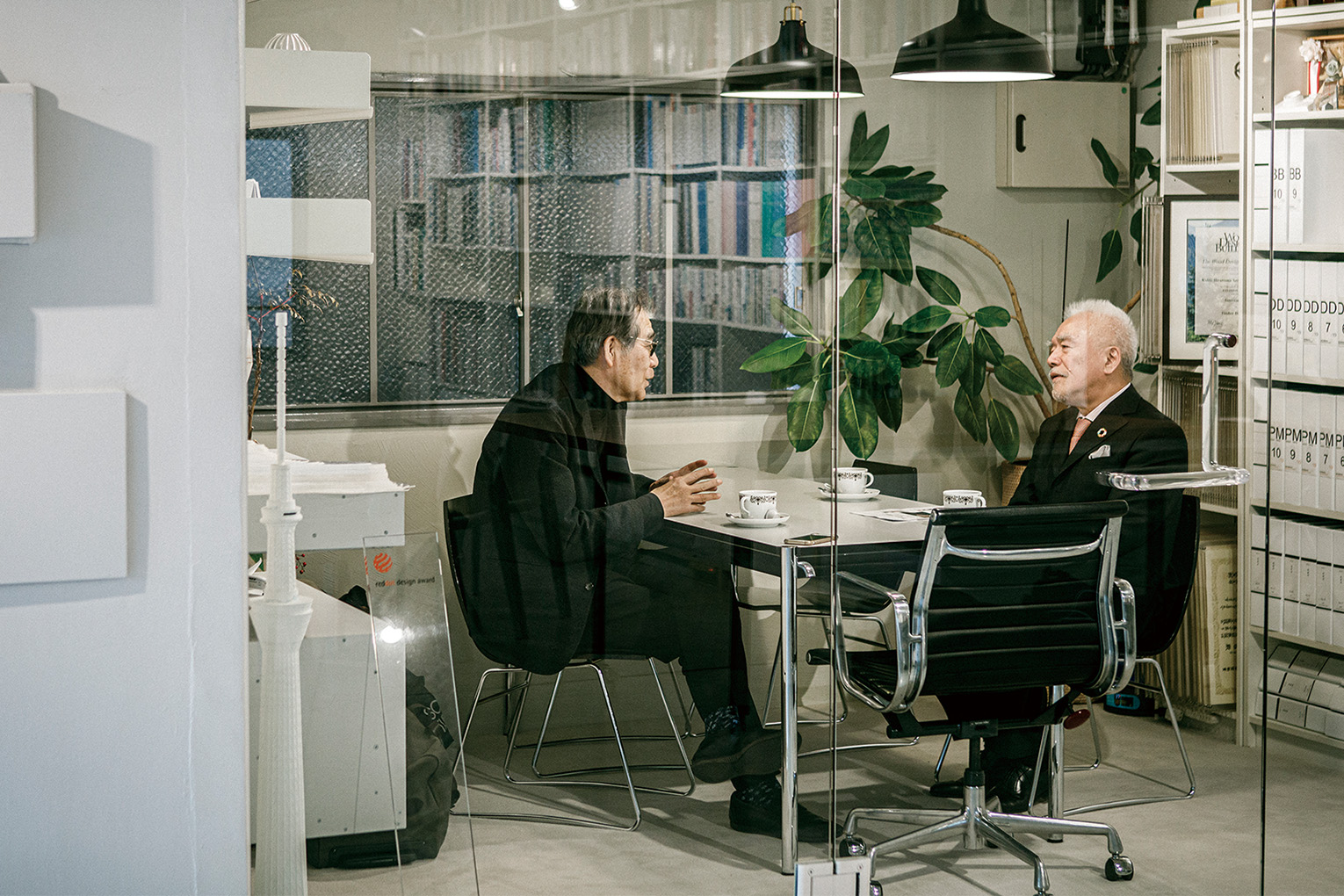
TATENO
Who assigns the price or value to a work of art like that? Art dealers?
NANJO
The price is not simply created by the art dealer. It’s quite a complicated process that is not entirely under their control. I often tell my students “value and price are completely different things.”
TATENO
Interesting.
NANJO
The value or worth I’m talking about here can refer to a lot of things. For example, is the work historically meaningful or was it the first attempt of its kind? Price on the other hand is an extremely simple calculation. It is purely the value you can sell something for on the market. In general, these two terms should be distinct and separate.
TATENO
You were previously the curator for Mori Art Museum. You promoted a lot of initiatives during your time there. Where did you get the ideas for the exhibitions you hosted?
NANJO
I spent a long time in the art world, which creates a tendency to start thinking about things only in terms of the art world itself. Simply put, people become convinced that art is something elevated and noble, and they unconsciously evaluate the worth of everything through the eyes of art. But art should be something that exists within society as a whole. I believe that as a part of society, a work’s value becomes clearer with the passage of time. That’s why I feel we should try to put ourselves in a variety of situations and positions and encounter art from those different perspectives.
TATENO
I see.
NANJO
A lot of cutting-edge technology was incorporated in the “Future and the Arts” exhibition that was held at Mori Art Museum sometime back. The mission of science and technology is to interpret the reality of the world existing around us, to look at how it is constructed, and to research this in a theoretical manner. Art, on the other hand, is an intuitive expression of that reality. While the processes behind each of these disciplines are different, they are in search of the same thing, and they are both creative in nature. This exhibition showcased a mixture of visions for the future in the form of both intuitive expression and scientific disclosure.
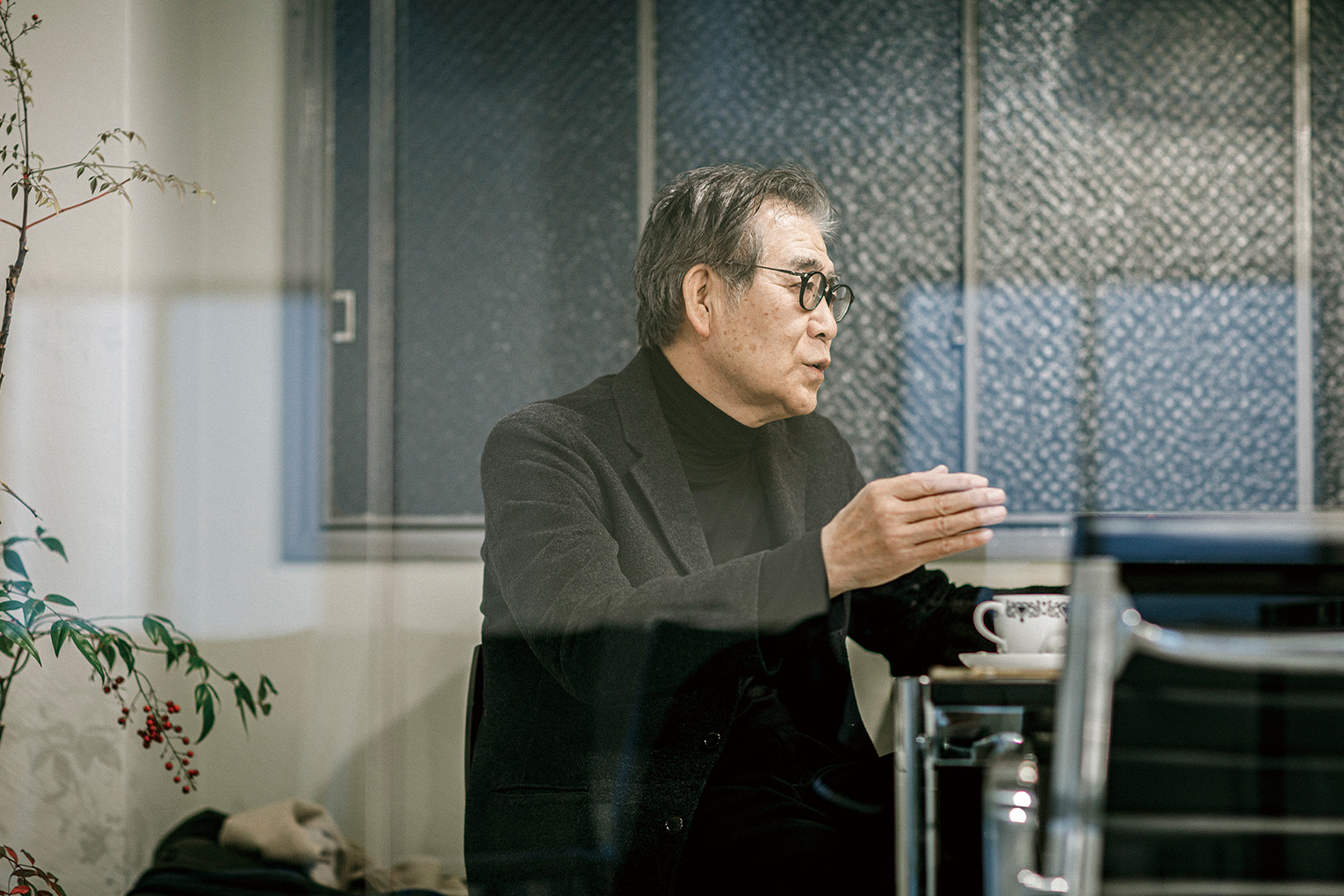
TATENO
You anticipated a theme that could have come right out of a World Expo, and beat them to it. Right now a lot of technologies like AI are making advancements, but this has served to remind me that paintings and other forms of art are something only humans can create.
NANJO
I have an interesting story related to that. I was speaking with a famous professor at Tokyo University who works on AI, and he was telling me that these programs could make countless paintings in the style of say Van Gogh. Basically, they get the AI to learn and remember numerous works of Van Gogh, and then the program is able to create artwork in that style. The greatness of Van Gogh had never left much of an academic impression on me up to that point. Then, suddenly, I was presented with an artwork painted using primary colors in this flat fashion, and I saw him in a new light. It was a dramatic transformation.
TATENO
It’s still hard to believe a computer could recreate something like that..
NANJO
It really is. Even considering these dramatic technological transformations, I was skeptical as to whether a computer really could produce a Van Gogh-like work. Then the professor said to me, if the program has a bug, it will produce some really strange paintings. With the right bug, it might even be able to create a work like Picasso.
TATENO
Is that right?
NANJO
However, should AI succeed in creating a work like that, we face the new challenge of deciding who can actually judge what is art and what is not. In my opinion, this can only be done by humans. That said, someone else hearing this discussion may say, “hold on a second. What about if that strange work created by AI is recognized by other AI as exceptional?” *Laughs.*
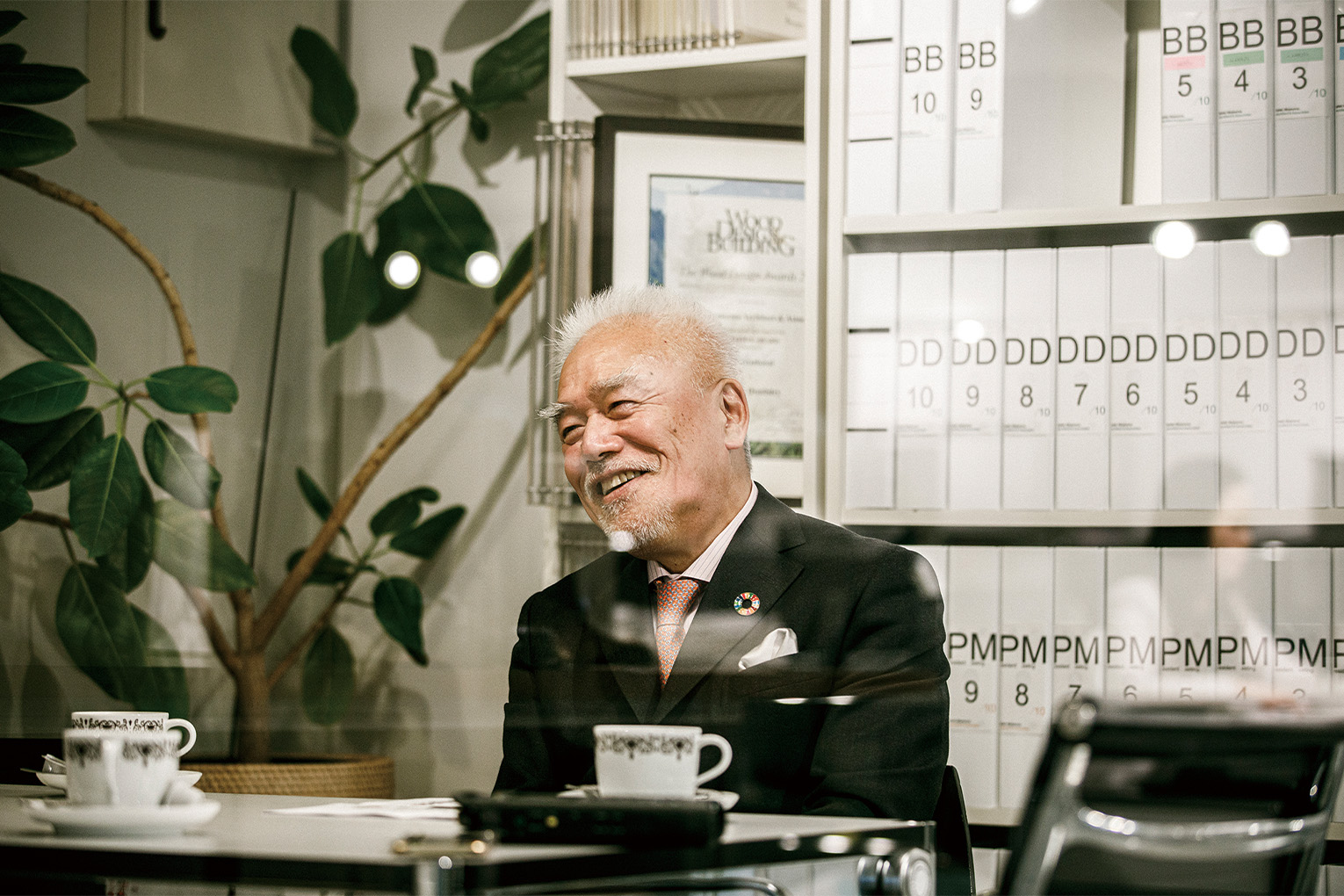
TATENO
*Laughs.* Surely if we didn’t know that the painting was created by AI, then humans would be the ones evaluating it.
NANJO
Exactly. There was actually a work that was announced as being the first to be drawn by AI.
TATENO
Is that right?
NANJO
To be more precise, it was actually the first work created by AI to be shown at an auction. Art is the source of a lot of interesting stories. There’s value in the story of the first piece of art created by AI and displayed at an auction.
TATENO
The catalogues we make at UNION are often judged most favorably when there is a story about the craftsmanship behind the products. I believe that background is important.
NANJO
We live in an age of selling stories. An acquaintance of mine built a small shop in Paris. He was originally a designer. When I asked him what he was doing at his store, he began telling me about Japan’s wrapping tradition using things like noshi. He studied Japanese wrapping techniques for years before bringing it to France and offering it as a service. There aren’t any wrapping services at stores in France, so he started providing gift wrapping to customers who brought items to his store. I told him there was no demand for a service like that in France, though. *Laughs.*
TATENO
How did things go for him? Was he successful?
NANJO
I actually visited his store in Paris during his first year after opening. The store was made entirely out of Japanese cypress with a tokonoma decorated in flowers. He would serve you matcha at the counter while dressed in kimono. There were no other customers besides me when I went there, and I spoke with him for around 30 minutes before heading home. I went to his shop the following year as well, but there were still no customers.
TATENO
I guess I can’t really imagine the French paying for a service like that. *Laughs.*
NANJO
When I visited him once more the next year, he was still open. That’s when I asked him how he was managing to stay afloat. He told me that having such a unique shop right in the center of Paris had attracted the attention of Louis Vuitton and Hermes, and they had come to check him out. From there, he built a relationship with the brands and began consulting them.
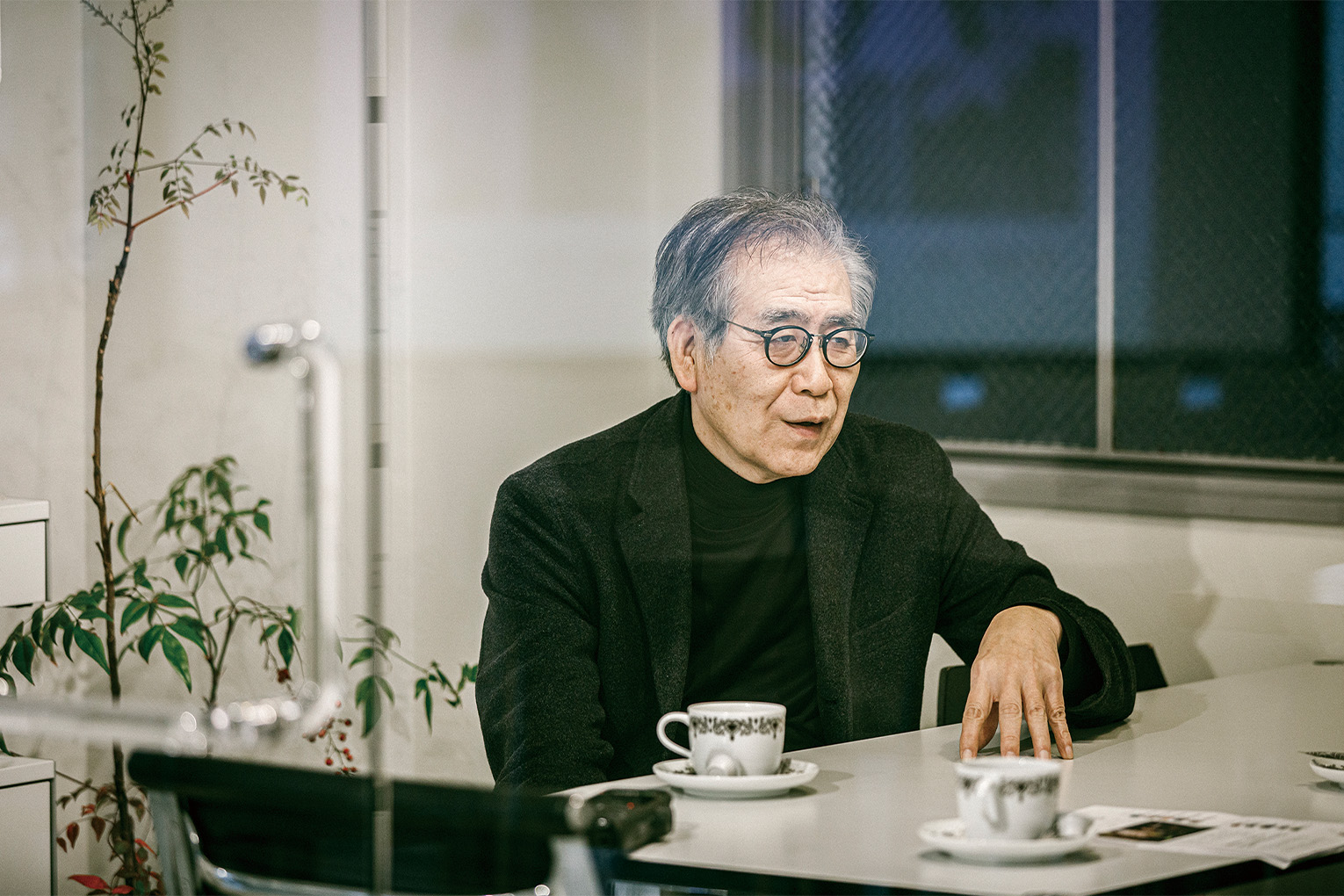
TATENO
Wow. Is that right?
NANJO
Now, he works with around 20 companies.
TATENO
20! That’s impressive.
NANJO
But the shop doesn’t sell anything. It has a showroom, where you can get a sense of the story behind the shop. People who have heard about this show up there to check it out.
TATENO
That’s really amazing. He has quite the determination.
NANJO
Things may not have gone according to his original plan, but in the end everything has worked out. I believe that Louis Vuitton and Hermes were attracted to his shop because of his story.
TATENO
Do you believe that people who have a talent for art are naturally gifted?
NANJO
To an extent, I have found that to be the case.
TATENO
Do you believe that it’s difficult to develop talent through hard work?
NANJO
Of course, talent can blossom through hard work. Take France’s Henri Rousseau for example. He was categorized in the naive art movement and worked in customs which earned him the nickname Le Douanier (the customs officer) Rousseau. The paintings he created were quite poor, but now his work is known for being crude but captivating. That said, his works are on display at numerous museums and enjoyed by many art lovers.
TATENO
What exactly do you think this means?
NANJO
In my opinion, if you defy what is expected, the criteria for evaluation is no longer whether you are bad or good. I'm sure his story is the reason why he was so respected. He was a poor customs officer who at the age of 40 took a leap of faith and started publishing his works. I think that's what made him so interesting. There are people, however, who really are gifted at drawing.
TATENO
Are these the people you would term “genius?”
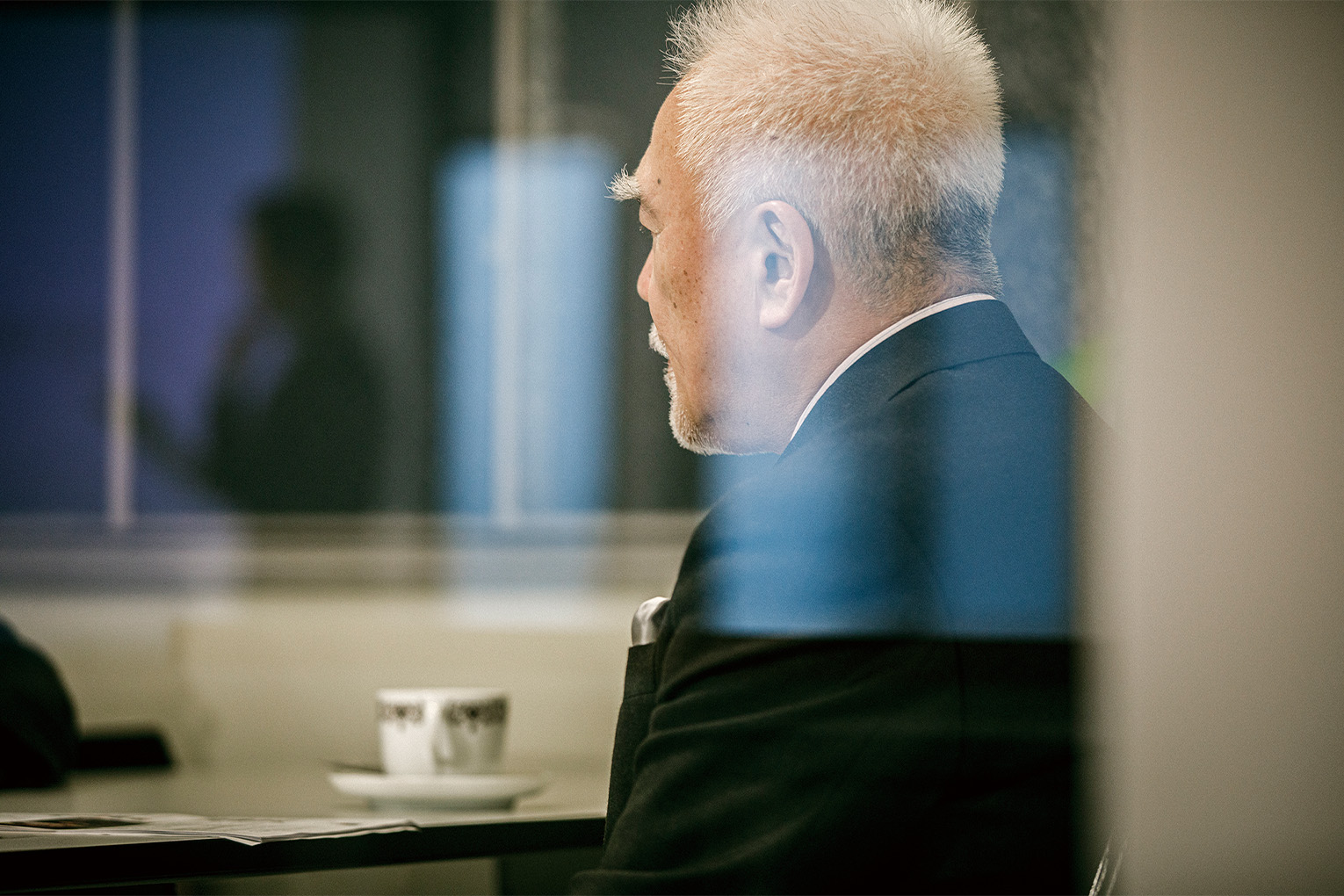
NANJO
Yes. They know how to balance a composition without being taught. They even account for depth. Some people can create works without ever having a career as an artist.
TATENO
Even architects, like Leonardo da Vinci, have created some astounding works.
NANJO
That’s true. Architects in the past were really good at drawing. Architecture today seems more one-sided or derivative to me. That’s why being able to draw a picture and being able to draw a blueprint are two different things.
TATENO
Kenzo Tange was a really excellent drawer.
NANJO
Tadao Ando used to draw as well.
TATENO
That’s right. There must be something in common between art and architecture, no?
NANJO
Yes, there must be something. Speaking of architects who expressed themselves through art, Le Corbusier was like that. What’s interesting is that there is something plainly different about a sketch drawn by an architect and one drawn by an artist. The same can be said for a sketch drawn by a sculptor. Some famous sculptors like Alberto Giacometti have left a few of their sketches behind. They don’t have any common sense about pictures or paintings, so their drawings often lack perspective or a detailed form. The image is instead an expression of their impression of it; they get caught up in its three-dimensionality.
TATENO
So the way an artist looks at things really does depend on their artistic genre.
TATENO
Speaking of art, there’s a recent painter who draws only black circles. When I think about whether that is really art, I’m reminded that it’s becoming increasingly hard to understand just what art is.
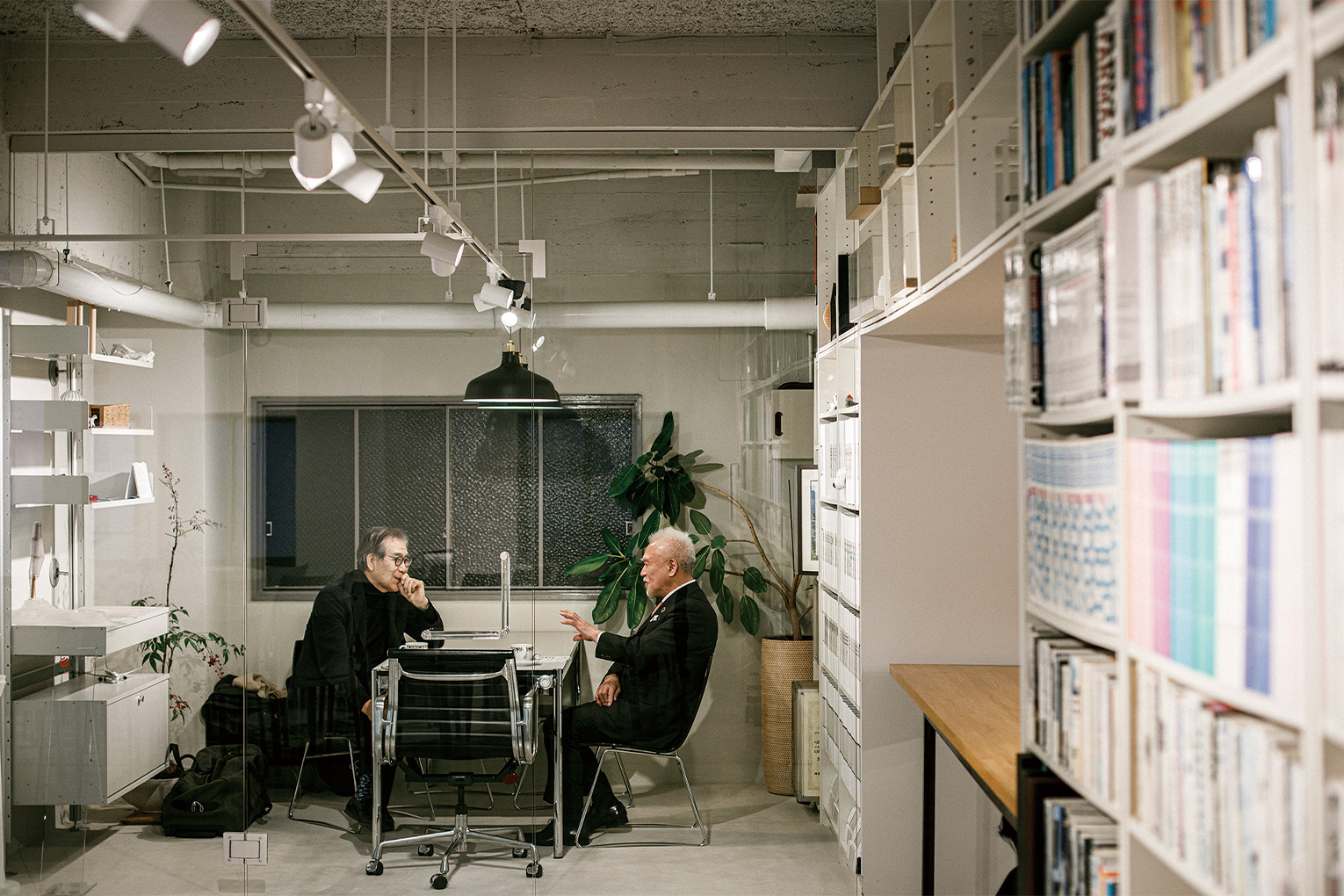
NANJO
You’re referring to Gutai Art.
TATENO
Yes. Gutai Art has its own history, which is why it has been respected for sticking to its own specific style all these years I suppose.
NANJO
I agree. There’s a strength to those who commit to a specific direction and see things through to the end. It may be the case that all who devote themselves to a given course in life end up in the same place, regardless of the initial path chosen. This might be a particularly Japanese way of looking at things, though.
TATENO
Interesting.
NANJO
The renowned American sculptor Walter De Maria created various round, triangular, and square sculptures, some of which are on display at Naoshima Island. I believe he was influenced by Japan when making those works.
TATENO
Is that so? Japan has had an influence on quite a number of things, hasn’t it?
NANJO
Yes, it has. From 2018 to 2019, there was an event held in France titled “Japonismes 2018.” The aim of the event was to revitalize the Japonism movement of the 19th century by introducing elements of modern Japanese culture to France. Japonism was at its peak at the beginning of the 19th century, when ukiyo-e artwork was first brought to France. This led to a sudden shift away from Western technology and design, which was grounded in Greco-Roman principles and traditions, towards a more Eastern approach. What was new or novel about Art Nouveau at the time was exactly this international departure from older Greco-Roman ideas.
TATENO
I see.
NANJO
What’s interesting is that the people who started this revolution all had something in common. People like Rockefeller, for example, who supported these new artistic movements, were at the same time providing assistance to Asia. That’s why institutions, such as the Asia Society, still exist in New York today. That was made entirely by Rockefeller. He also made the museum of modern art around the same time. This shows that basically the same people helping support modern art were also the ones promoting Asian principles and ideas at the time. Today, you hardly see anyone providing support to artists, however.
TATENO
In the past, there were a lot of people called “benefactors” who helped support artists.
NANJO
Yes, there were. These benefactors were not people who operated according to standard market prices. They were people who understood culture and offered their support in uplifting it. Take geisha for example, they would support them saying, you can eat tonight for free, just show me one of your talents. They did not offer support hoping for some profit in return. They offered their support simply because they found something interesting or entertaining. At least that’s what I believe.
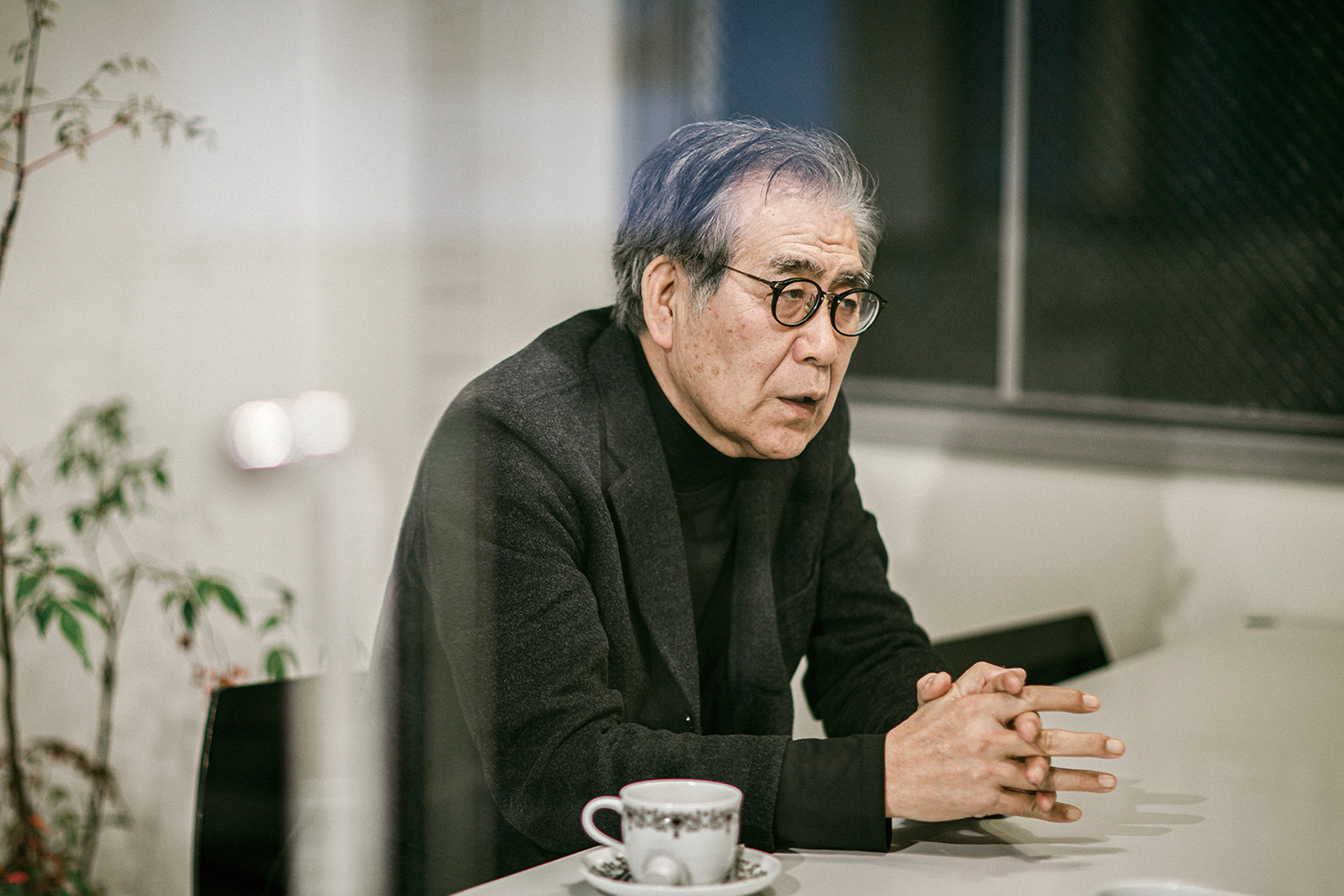
TATENO
I understand that sentiment. Supporting interesting people can lead to its own profits in the end or it can become an asset to a city or town.
NANJO
Around two years ago, the Agency for Cultural Affairs released a document on how to be a leading museum that was widely criticized and considered quite controversial. It suggested that museums sell items in their collection that were not on display. The museums responded that there was a deeper meaning to keeping these collections beyond putting them on display. Museums are institutions that provide value specifically because they keep such extensive collections. If in 50 years, for example, a museum decides to hold an exhibit on art from the 1990s, they will actually have works to display from this period. That’s the value they provide.
TATENO
So this is something that isn’t widely recognized.
NANJO
Exactly. They thought by telling museums to sell their collections they could help revitalize the art market, but they didn’t think about what would happen if they went through with this. Galleries would act as competition to the museums.. For galleries today, museums are the places that buy the artwork in the end. This suggestion would turn the museums and galleries into competitors. This would never work structurally.
TATENO
I visited Switzerland’s Vitra Campus some time back.
NANJO
Is that right? The chair exhibition they have there is amazing, isn’t it?
TATENO
It is. That organization is truly working to protect and elevate culture. There’s no place like it here in Japan.
NANJO
Just between you and I, the National Museum of Modern Art, Tokyo really should be working with middle-to-big-name Japanese artists on large-scale Japanese projects, rather than just showcasing modern art or foreign artists or works of art from foreign collectors. We still don’t have anything like that in Japan.
TATENO
At UNION, we started making door handles around 60 years ago. One thing I still regret is not leaving behind all of the individual works we made with the architect Togo Murano. That’s something we can never go back and do over.
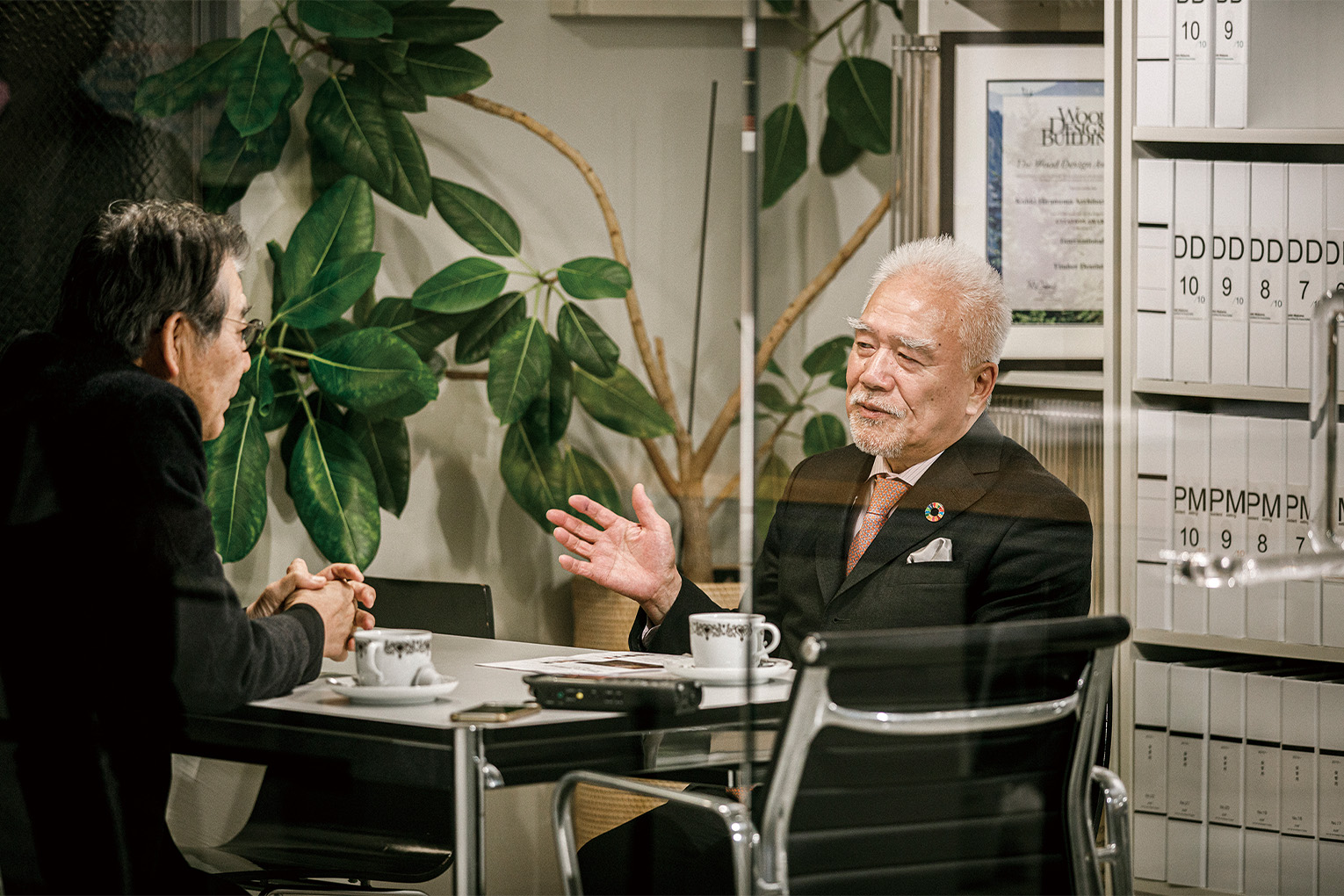
NANJO
They’re still a part of the original architecture, no?
TATENO
They are, but if the buildings disappear so too will the door handles attached to them. This is what got me started collecting these works.
NANJO
Toyota also made an art museum in Toyota City. I heard that they bought back a lot of their products for that venture.
TATENO
We will have to do the same. It would be great if we could hold an exhibition of them in the end.
NANJO
The Vitra Campus constructed a facility like that just for chairs, so it would be nice to have a museum just for door handles as well.
TATENO
There’s nothing like that yet, is there? I’ve been thinking about collecting every type of handle imaginable from around the world.
NANJO
There’s no specific global market just for that, so I imagine it would take some time. You might have to purchase the entire building to get the handles back. *Laughs.*
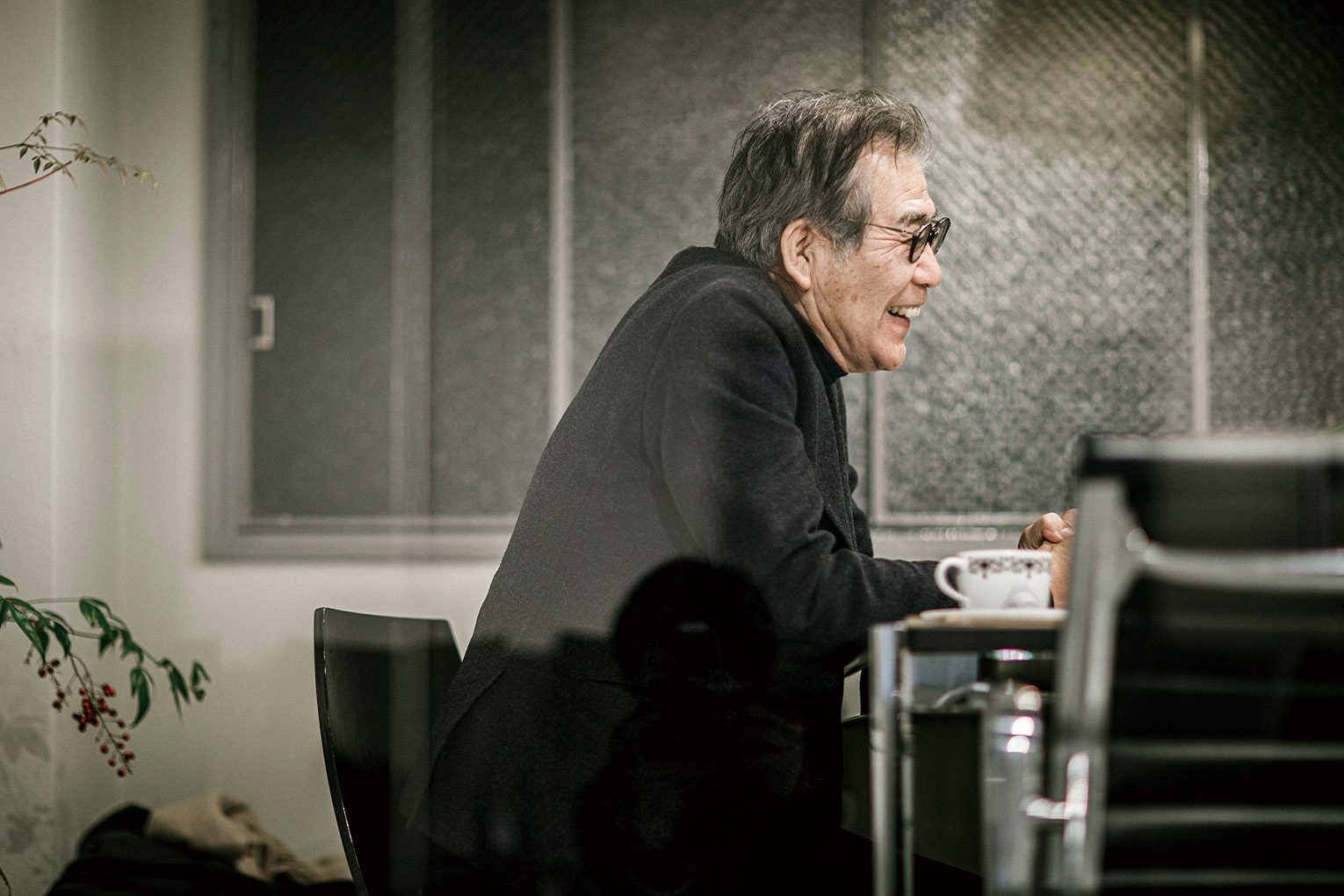
TATENO
That’s quite a tall order. *Laughs.* You always come up with some new idea for your exhibitions. Where do you get these ideas?
NANJO
In Japan, there are a lot of people around the country who think that Tokyo has a lot of museums. But if you go to New York or Paris, you realize that those cities have even more museums. What’s more, they have museums that focus on all kinds of specialized themes. In Japan, there are no museums dedicated to design or architecture or fashion, for example. There are lots of facilities called “museums,” but none of them dig very deep and focus on a really specific field. We need to make more museums that do this.
TATENO
Did Mori Art Museum try to fill this gap?
NANJO
Mori Art Museum was more of a general museum, although it’s exhibitions did focus on some rather niche topics. Recently, I’ve been thinking about reaching out to Asia a bit more, but I haven’t really got around to it yet.
TATENO
You were talking about the timing being just right when you held your exhibition, but do you always try to coordinate your exhibitions to correspond with current trends?
NANJO
I may take somewhat of a journalistic approach. When I spoke with Joi Ito, he talked about how people working in innovative fields always speak about the future. Art experts, on the other hand, have conversations centered on the past. This struck me. People engaged in the world of art have been studying art history. They always reference the past. This was something that I wasn’t particularly fond of. “Future and the Arts” may be connected to this discussion I had with him. I think the art world must also consider what lies ahead moving forward.
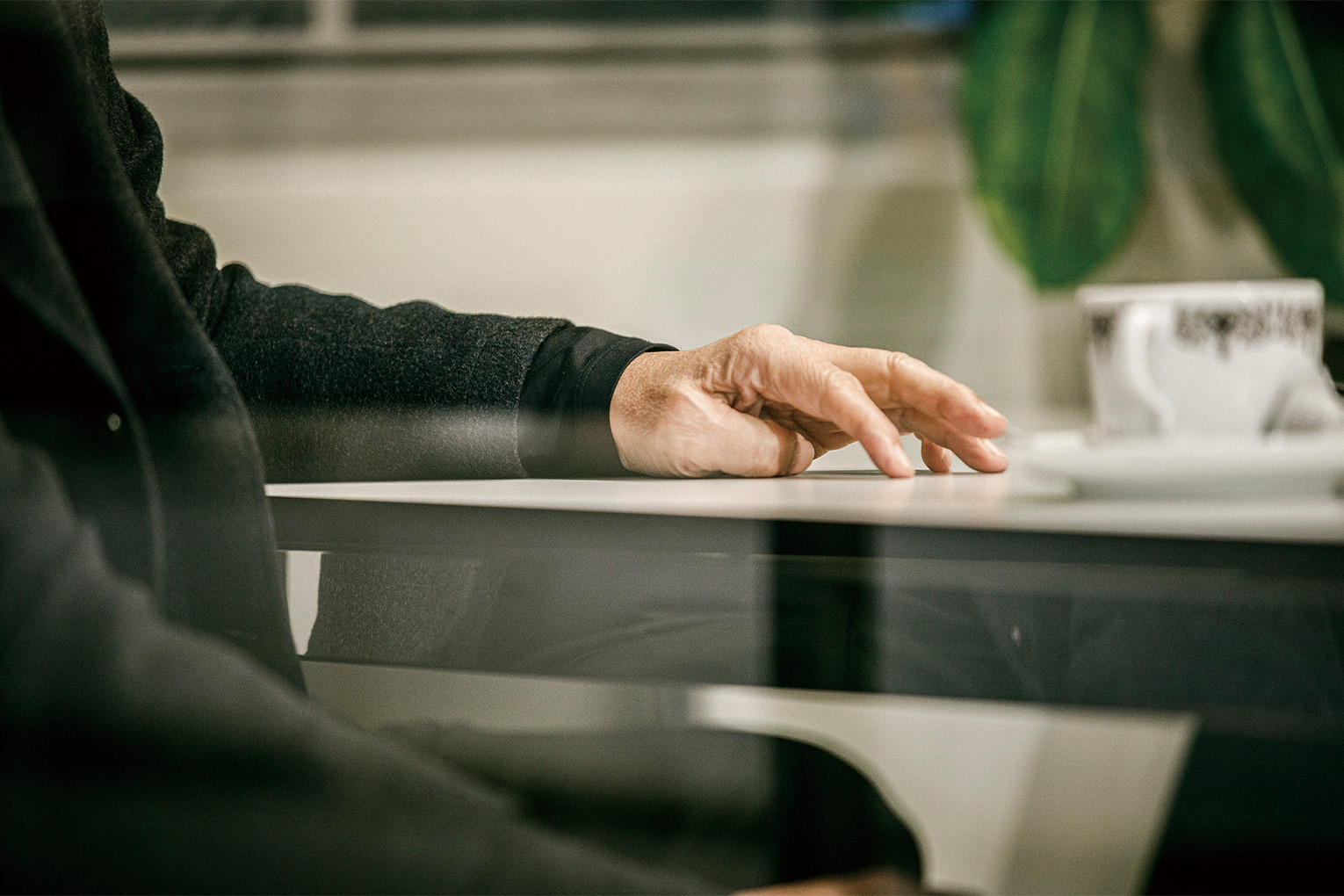
TATENO
That’s wonderful.
NANJO
It’s important to think about just what things will lead to new art in the future.
TATENO
When you go to an art museum in Europe, you see children laying on the floor making their own copies of the artwork. This is something you just don’t see in Japan.
NANJO
That’s because Japan has a strong mind for management and oversight. People worry that if kids start doing that, they’ll spill ink or splash paint or something, which is why they’ve prohibited it I believe.
TATENO
Whether copying an artwork or something similar, I think we should relax these kinds of regulations in order to encourage children of that age to express themselves.
NANJO
I agree. My son was raised in France, and one of his art assignments in middle school was to draw something related to human rights.
TATENO
Wow. That’s quite a profound theme.
NANJO
If it was Japan, they would tell you to draw a picture of your mother or of some scenery.
TATENO
They give assignments based on what’s right in front of the students.
NANJO
That’s right. But in France, they talk about human rights. By assigning a topic like that, children start reading the newspaper or pick up books on human rights. If there’s something in the newspaper about a white cop beating up a black person, the students will cut that out and keep a record of it. As a result, the students’ artwork will carry a clear message and become an expression of modern art. Put simply, if you have something you want to say when making art, then that message becomes the centerpiece of the artwork. Whether the form of expression is pasting photos together or writing something out doesn’t matter. It becomes a true expression of modern art in that sense. This is why you will never hear students in Europe saying they don’t understand the meaning of modern art. They understand that the work has something to say, and this is the way it is trying to say it. In this sense, Europe is really ahead of the pack in terms of education.
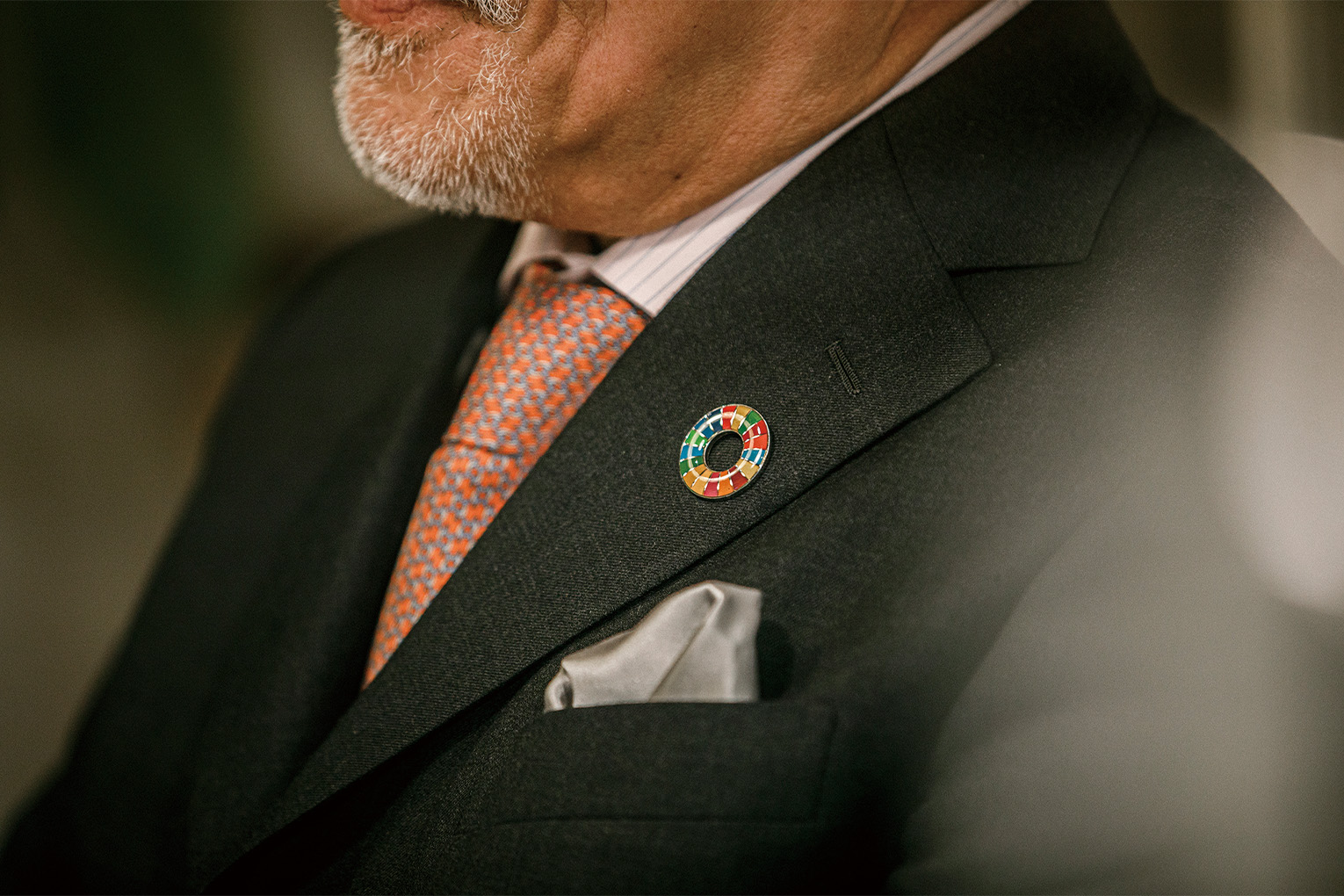
TATENO
That is completely different from Japan.
NANJO
Japan is still stuck in the world of sights and scenery.
TATENO
I guess Japanese education really does need to change a bit.
NANJO
It’s completely unacceptable.
TATENO
It doesn’t translate in other countries and cultures, because it’s not based on an original thought but on what the teacher tells you.
NANJO
After the war, Japan became democratic, but it didn’t foster a culture for having debates. This has led to the bullying problem in Japan, and is why Japan doesn’t have a society that values difference.
TATENO
Japanese society weeds out those who express a different opinion from the majority. It really is a society where the nail that sticks out gets hammered down.
NANJO
And since adults act this way, children end up doing the same thing. In the world of art, however, you can’t be the same as everyone else. Being different is what gets you recognition. I think we really need to extol this way of thinking far and wide.
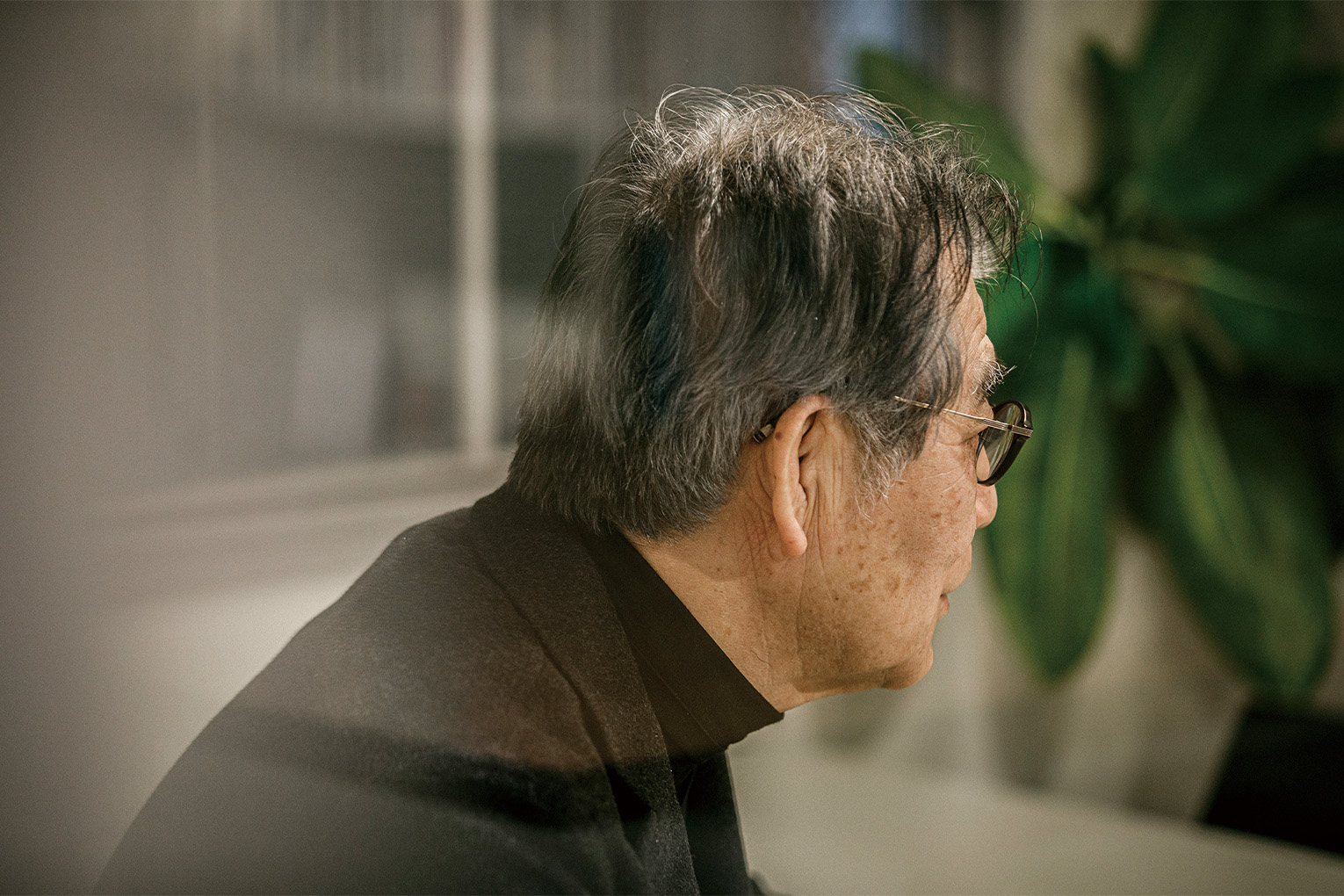
TATENO
In our industry as well, you can’t succeed by doing the same things as the competition. You’re recognized for what you do differently. Otherwise, customers won’t buy your products.
NANJO
Creative societies arise when everyone reaches that level of understanding. Unfortunately, there currently aren’t many leaders to teach us this fact.
TATENO
The consensus today is that being the same as everyone else is what’s right. But where’s the fun in that?
NANJO
Mathematics has clear-cut answers, art doesn’t.
TATENO
This is exactly why I feel we need to focus more on art in education.
TATENO
When looking at modern art, there have been works I couldn’t immediately understand. But by continually focusing on them, I can get a sense of the artist’s passion and what they were trying to communicate.
NANJO
In art, the artist creates their works without knowing precisely what is correct. In commercial design, there’s always a client. If the client gives the green light, then the work is okay. Art, on the other hand, is done with the expectation that an unspecified number of people will appreciate one’s work.
TATENO
The question is who is going to support an artist until they make it. There must be quite a few people who get buried along the way.
NANJO
There are a lot of people who suddenly disappear even when making good art.
TATENO
That feels like such a waste to me. Of course, it might be par for the course. There are still people who continue to make art until they finally get recognized even within this process.
NANJO
What will it take to reach an acceptable level? That’s what young artists continue to look for as they create their works. It’s why they must struggle.
TATENO
We really have to make a place for these types of artists to be active and flourish.
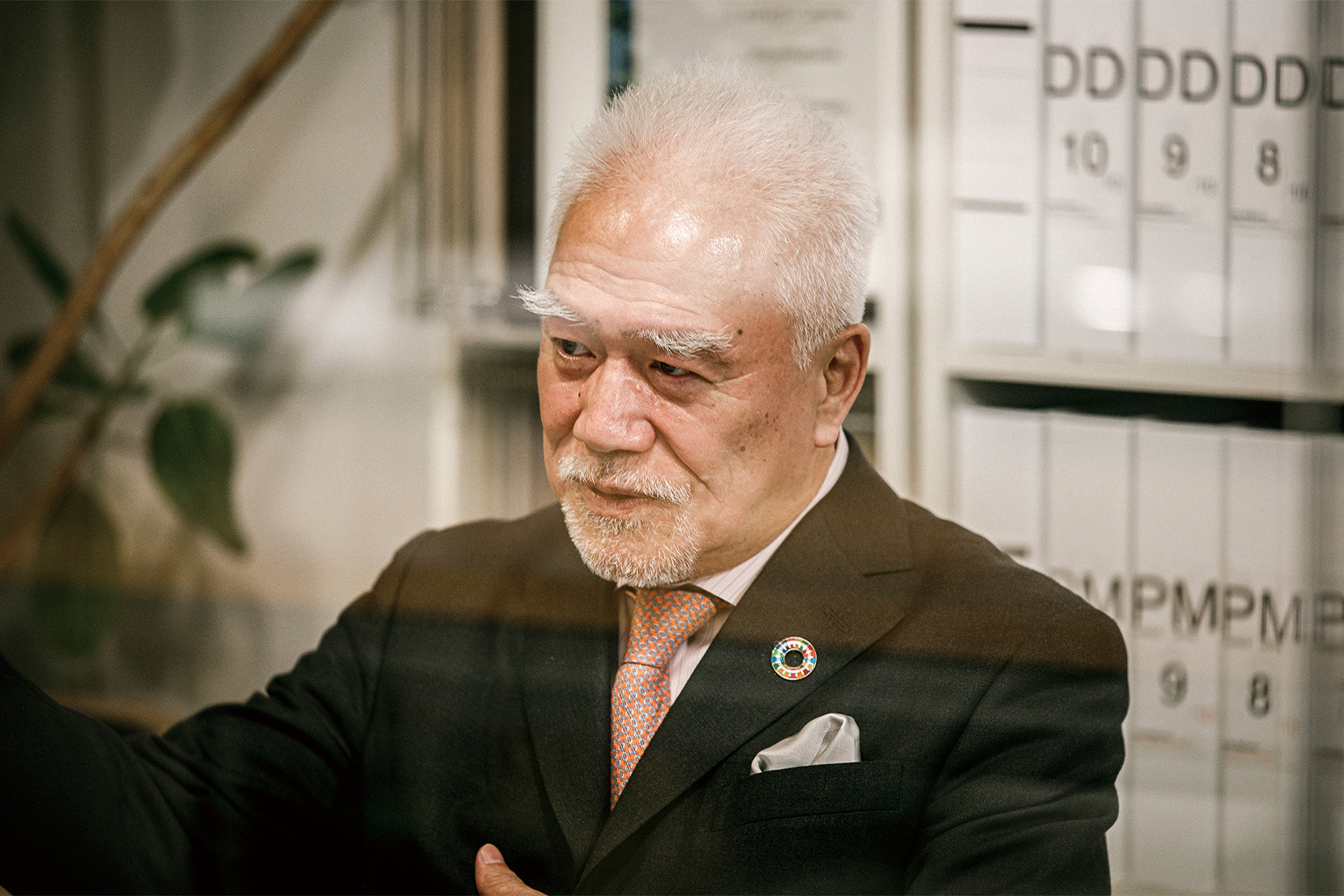
NANJO
The key is not to be discouraged and continue on even when things don’t go right. You shouldn’t be an artist because it’s cool. Art critics like myself recognize those who put in the work to get noticed even at the expense of losing themselves in the process.
TATENO
You must be totally devoted to creating your art in order to get recognized. This hasn’t changed, has it?
NANJO
In the end, the art world is inexplicable. It can’t be expressed through logic.
TATENO
Do you ever work to cultivate young artists that you feel have potential?
NANJO
Yes, but just because I think they’re good doesn’t mean they will make progress. *Laughs.*
TATENO
*Laughs.* Do you get people who push themselves onto you as well?
NANJO
Of course. Some people ask me to check out their art, others want me to write a letter of recommendation. I’m relatively open to being approached. But predicting whether someone will grow as an artist is another matter entirely.
TATENO
When we look at art, there are works that make us feel something and others that don’t. What exactly is the reason for this?
NANJO
There are different ways of thinking about this. This artist was successful because of A. This artist became famous because of B. There are many stories behind the art itself, but in the end, it has to attract a large number of people for it to be good art. But what exactly is the standard for this? This is really difficult to define. When I was young, a close friend of mine and I were asked to look at art from the Tenpyo era. We must have checked out around 100 exhibitions in a month for that.
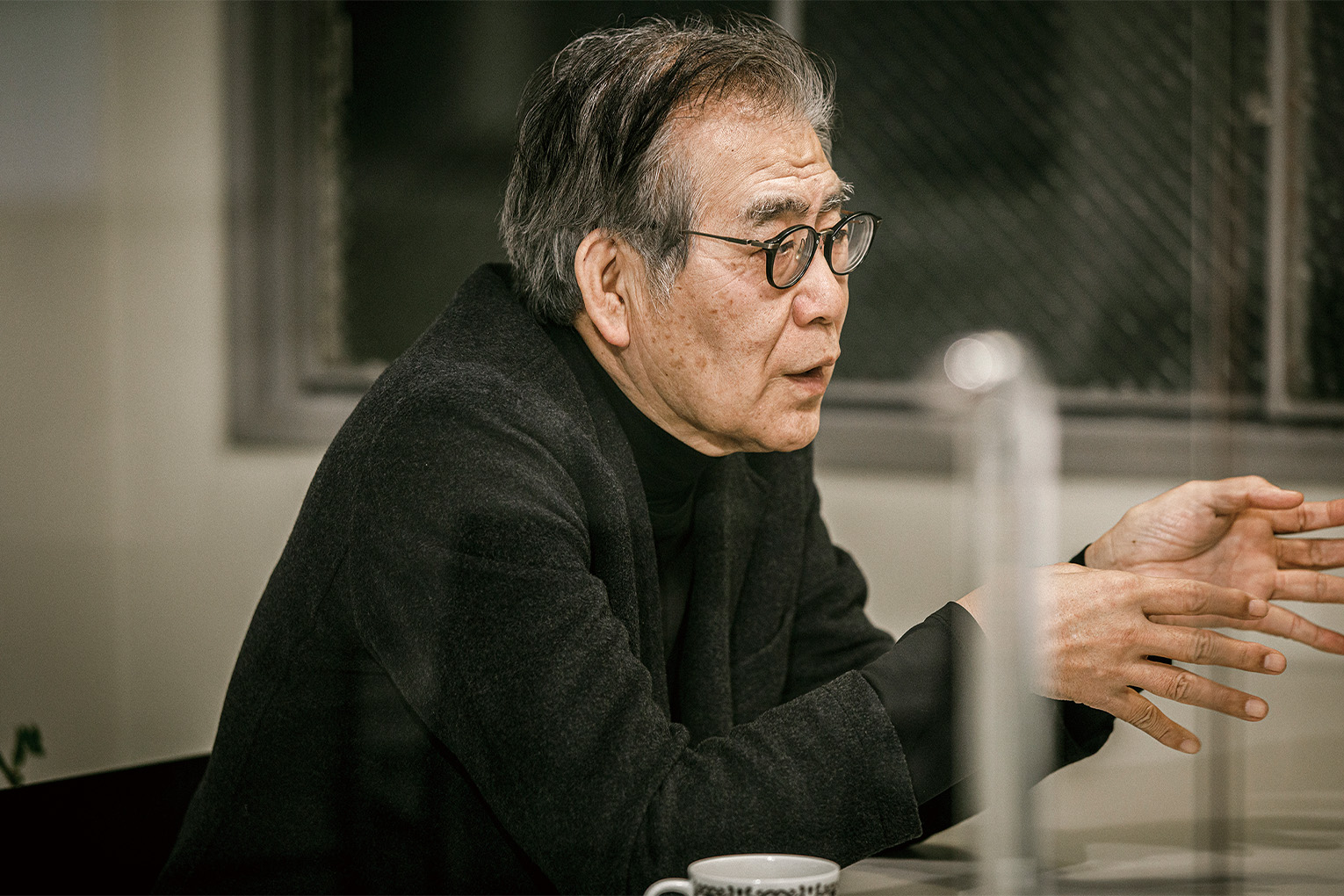
TATENO
Wow. That’s amazing.
NANJO
Out of all the works, there were one or two that we both thought were good. When talking over what we liked about them, we generally agreed on what we thought was good. What’s more, we were in agreement about what we didn’t like about a given work as well. However, we didn’t see eye to eye on works of art that were somewhere in the middle of these two extremes. Even though we had different tastes and preferences, we still thought the same things were good. But we couldn’t explain why. This is what makes art difficult.
TATENO
So you both thought “this is good” for the same works.
NANJO
There is something that defies logic that everyone can sense in art, whether it’s the beauty, the techniques, the message, or something else.
TATENO
I do feel there has to be some kind of message for art to be good, though.
NANJO
But there are still times when we wonder “why is this good?” The key is in the story behind the work of art at that time. This artwork carries some meaning that makes it good. Sometimes we don’t understand it just by looking at it, but when we hear the explanation, it all becomes clear. I think this is true for a lot of art. Still there are some people who will question if this sort of thing is art.
TATENO
Do you think there are any young internationally-respected artists in Japan?
NANJO
Chiharu Shiota, who I met recently, is a really well-recognized artist.
TATENO
Interesting.
NANJO
Her exhibitions attract as many as 700,000 visitors. She currently has four works on display at art museums in China, and is active in São Paulo as well. She’s sought after around the globe. Chiharu Shiota’s artwork uses stretched out pieces of red thread that really create an impact when photographed. I think one of the reasons she has become well known is because her works are widely distributed online through platforms with a lot of users like Instagram.
TATENO
The power of social media is amazing, isn't it? We held an exhibition at the Milan Furniture Fair last April. Tsuyoshi Tane took part in it with a display that highlighted the sand mold casting process. Our exhibition started trending on Instagram and received 30,000 visitors in the end.
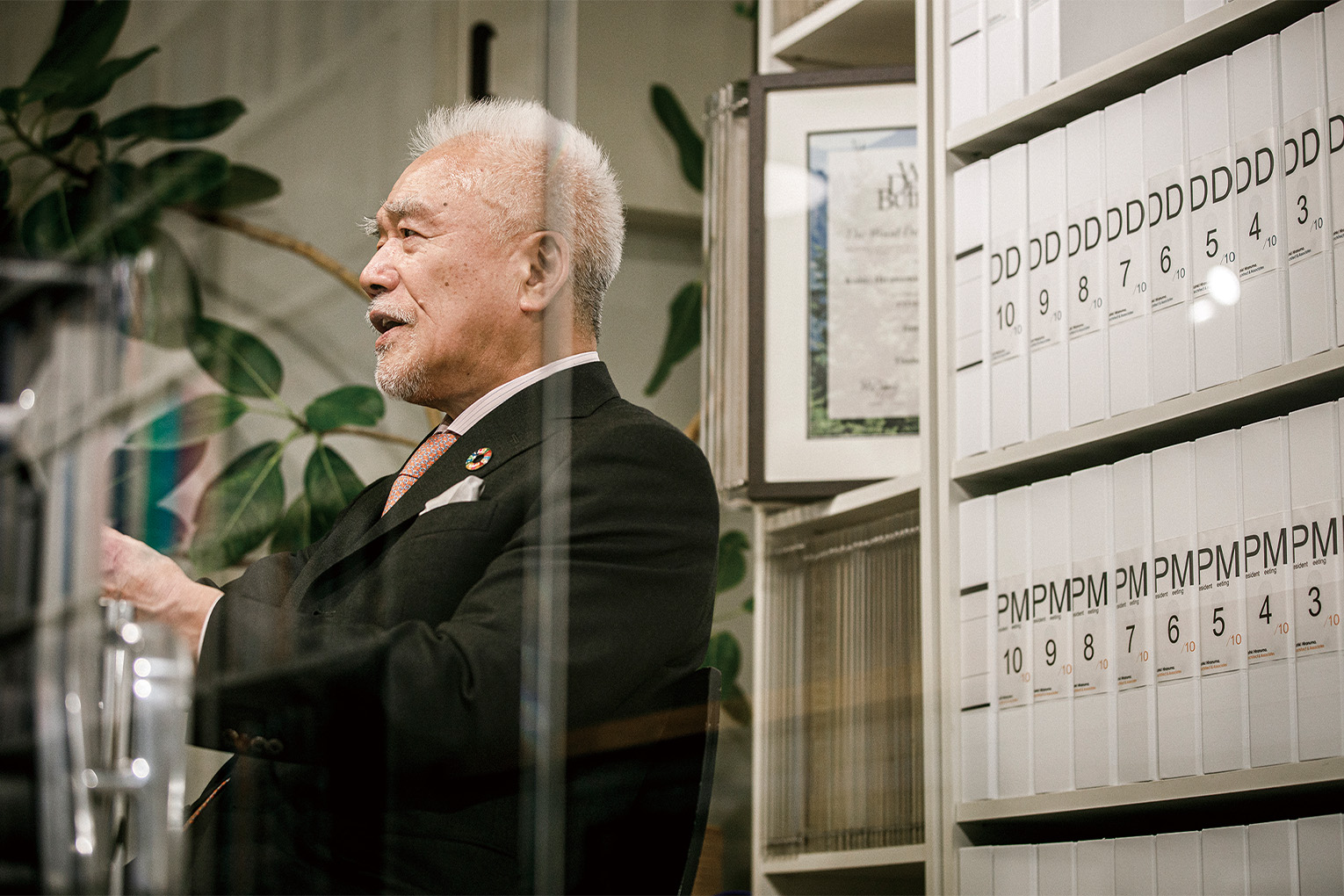
NANJO
So visitors actually got to see door handles being made?
TATENO
Yes. The display featured tin being poured into the sand mold cast. People really thought this was interesting.
NANJO
Did you put a lot of thought into the performance of this?
TATENO
UNION has 60 years of history, so before entering the venue, we displayed a collection of some of our most representative door handles as well as various molds and casts used to make our products. After viewing these works, the visitor got to see the actual casting process. Next, we showed off some of our more futuristic pieces. People said the whole experience was quite interesting.
NANJO
So the whole exhibition was intentionally designed?
TATENO
That’s right. Mr. Tane coordinated the entire thing.
NANJO
I actually just worked with him last week.
TATENO
Is that right!?
NANJO
It was a project for Hirosaki Museum of Contemporary Art. That red brick building was constructed 100 years ago. He is in charge of the renovation. The old warehouse is scheduled to be used together with the museum.
TATENO
I heard a bit about this project from Mr. Tane himself.
NANJO
He was contracted for the project two years ago. He’s quite in demand these days. In fact, he’s so sought after, I’m beginning to get a little worried. *Laughs.*
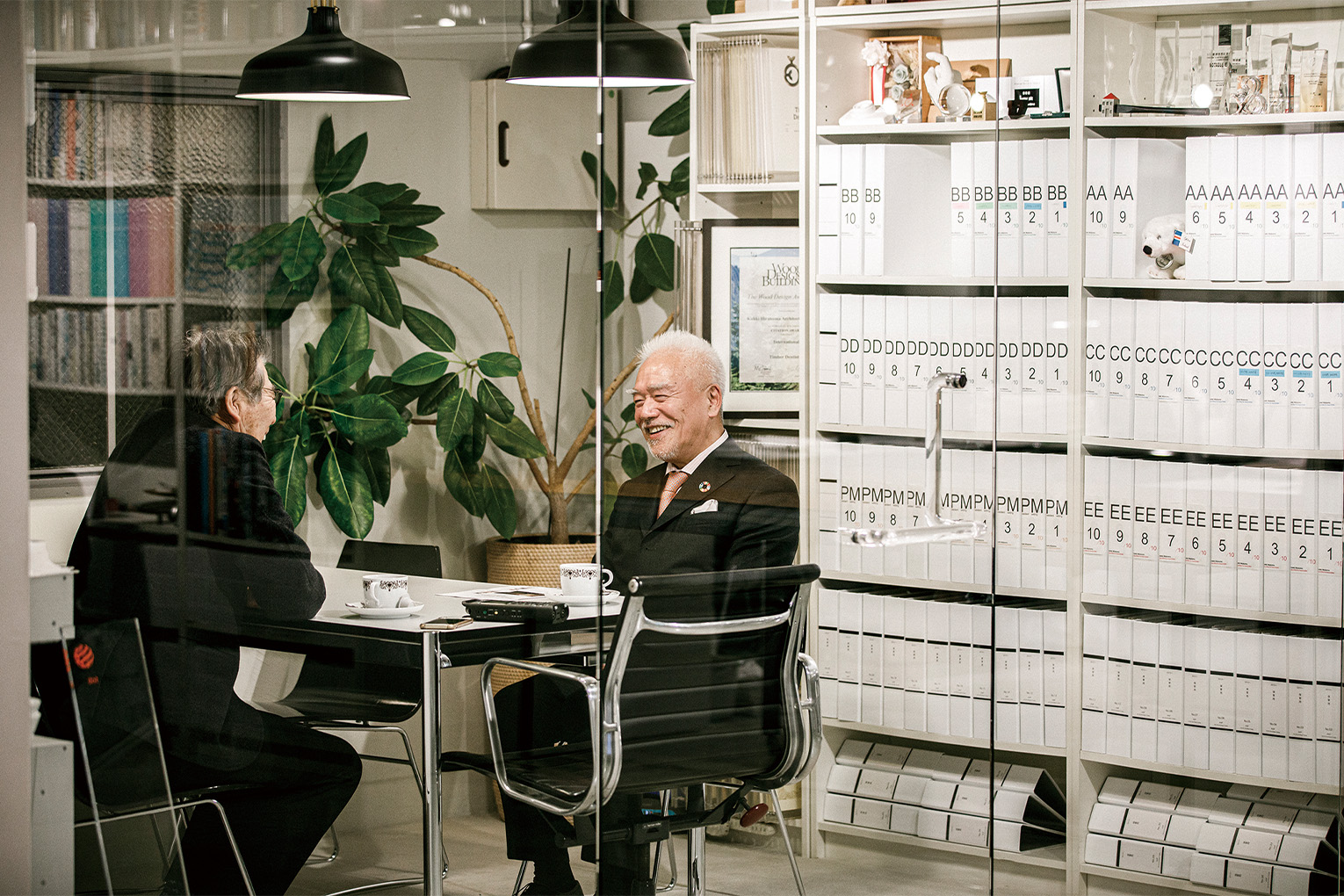
TATENO
*Laughs.* He’s just getting started, isn’t he? I’m looking forward to seeing how he will grow and what he will show us moving forward. We got a lot of positive feedback on Instagram at the Milan Furniture Fair thanks to Mr. Tane’s efforts. The impact of social media really is impressive.
NANJO
It really is. I think the standards for evaluating art are going to change as a result.
TATENO
What do you mean exactly?
NANJO
In other words, art is being popularized through photos that are uploaded to Instagram. Aesthetic tastes are beginning to shift to those objects we define as “Instagrammable.” In the past we hung art on the wall. Now, we upload a photo to Instagram. There are people in the art world who are quite apprehensive about this trend, but the writing is already on the wall.
TATENO
You’re right about that.
NANJO
70% of the people who visit Mori Art Museum come because of information they saw online. We of course make flyers and advertise and promote the museum, but the majority of visitors we receive rely on information they have found online.
TATENO
You just hinted at this, but these types of changes are sure to have a profound impact on the art world.
NANJO
I think our aesthetics are beginning to change. In haiku, Basho talked about things being both transient and immutable. I think we can interpret this as meaning that there is something universal even in passing trends. There is an eternal truth about the age in question that lies within our changing aesthetics. This is why you cannot simply discount something as being just a fad.
TATENO
Of course, we must continue to update the things around us, but there are surely some things that must not be changed. I think you must still learn the fundamentals when it comes to art or other subjects.
NANJO
I have an interesting story. If you show the characters for “transient and immutable” to a Chinese speaker, they do not interpret the meaning the same as a Japanese person. They take it to mean that trends are not simple or easy.
TATENO
That’s true. Trends are not something that can be simply created.
NANJO
Trying to start a new trend is no easy task.
TATENO
When I watch you doing your work, you really seem to be having a lot of fun all the time.
NANJO
No, no. *Laughs.” Art is something that must be debated and discussed constantly. Yet there is no conclusion. It’s hard work.
TATENO
You still help out at Mori Art Museum, correct?
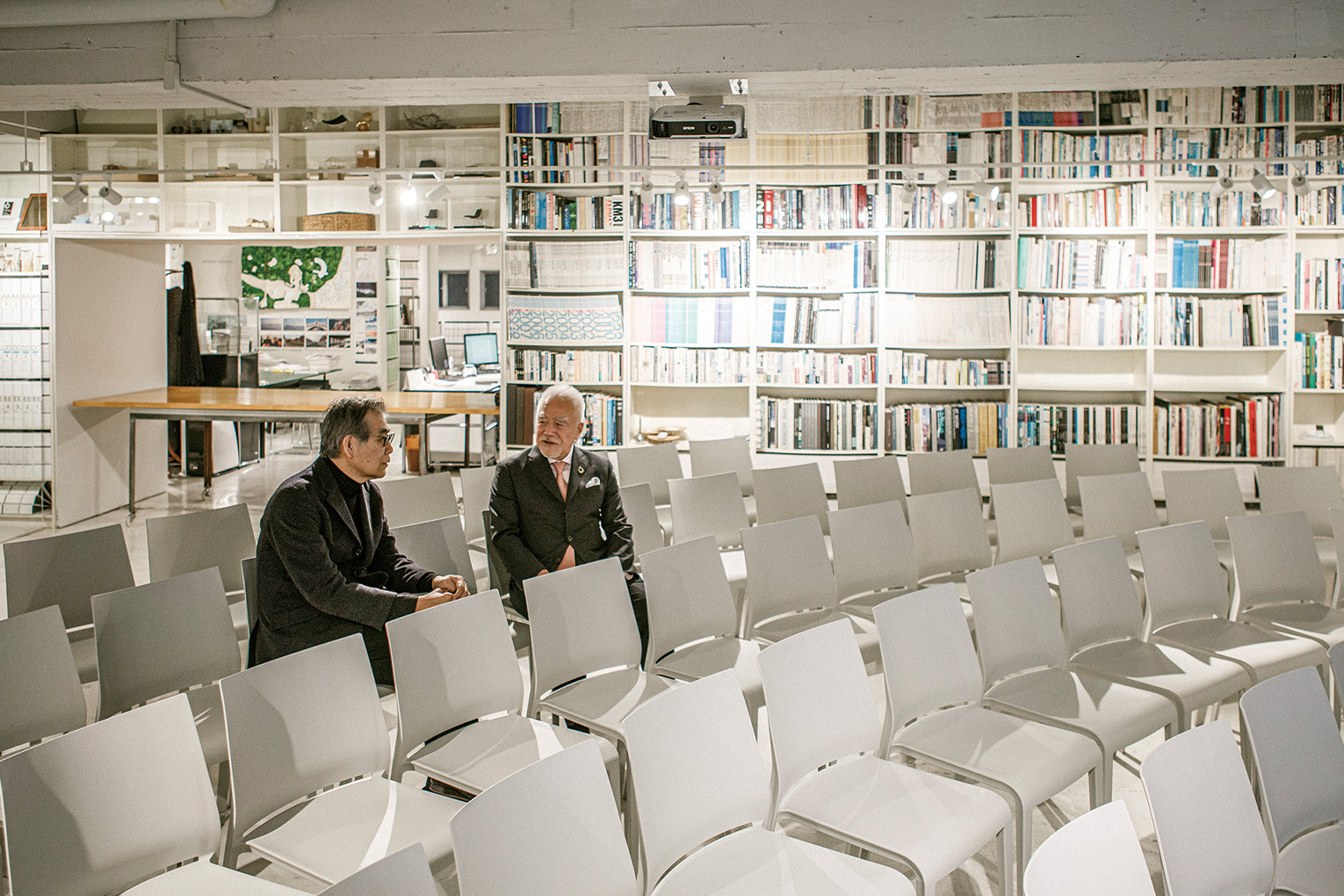
NANJO
That’s right. But I am also getting more outside work these days, like the Hirosaki Museum project I just mentioned. I actually have my own company as well. They’re going to oversee the Toyota museum, so I help out with that. I’ve also been contracted to work on a museum that’s opening in Taiwan. I have a few big projects on my hands right now. The Taiwan museum is being designed by the architect Renzo Piano.
TATENO
Renzo Piano is involved? That’s incredible.
NANJO
An architect who worked on Mori Art Museum is also involved as a consultant. The general direction of the project has been set. Now, we are starting to look at the interior.
TATENO
You used one of our products for Mori Art Museum, didn’t you? Thank you for that!
NANJO
We did. Hirosaki Museum is also using one of UNION’s products, isn’t it?
TATENO
I believe the museum is using one of our handles.
NANJO
Please come and check it out when the museum is complete.
TATENO
It would be my pleasure. I’m sure the museum will get a lot of visitors, being that you worked on it with Mr. Tane. Japanese people love museums as well.
NANJO
Yes, but going back to our ealier discussion, the Japanese art market is quite weak. There aren’t many people who buy art in Japan. There are a lot of people who visit museums, however.
TATENO
This is true. When I went to Europe I visited several museums, and I always ran into Japanese people there.
NANJO
Exactly. I think we’ve already started to shift to a sharing economy in this sense. Rather than owning artwork oneself, public institutions keep the works for public viewing by a large number of everyday citizens. This is the current model.
TATENO
In the West, there is a strong culture for purchasing art for one’s private collection. This is why I think it would be good if more Japanese people took an interest in buying a piece of culture.
NANJO
Yes. If we don’t create this type of market, young artists won’t be able to make a living. Today, ⅓ of the market is in London, ⅓ is in America, and the rest is in China. Japan only makes up a few percent. Japan is ranked 3rd in the world in terms of GDP. There’s something wrong with this breakdown for the art market.
TATENO
I hope we see more benefactors coming out and purchasing art like in the past.
NANJO
I see you as being one of these benefactors, so why not extend your efforts to the art world as well. *Laughs.*
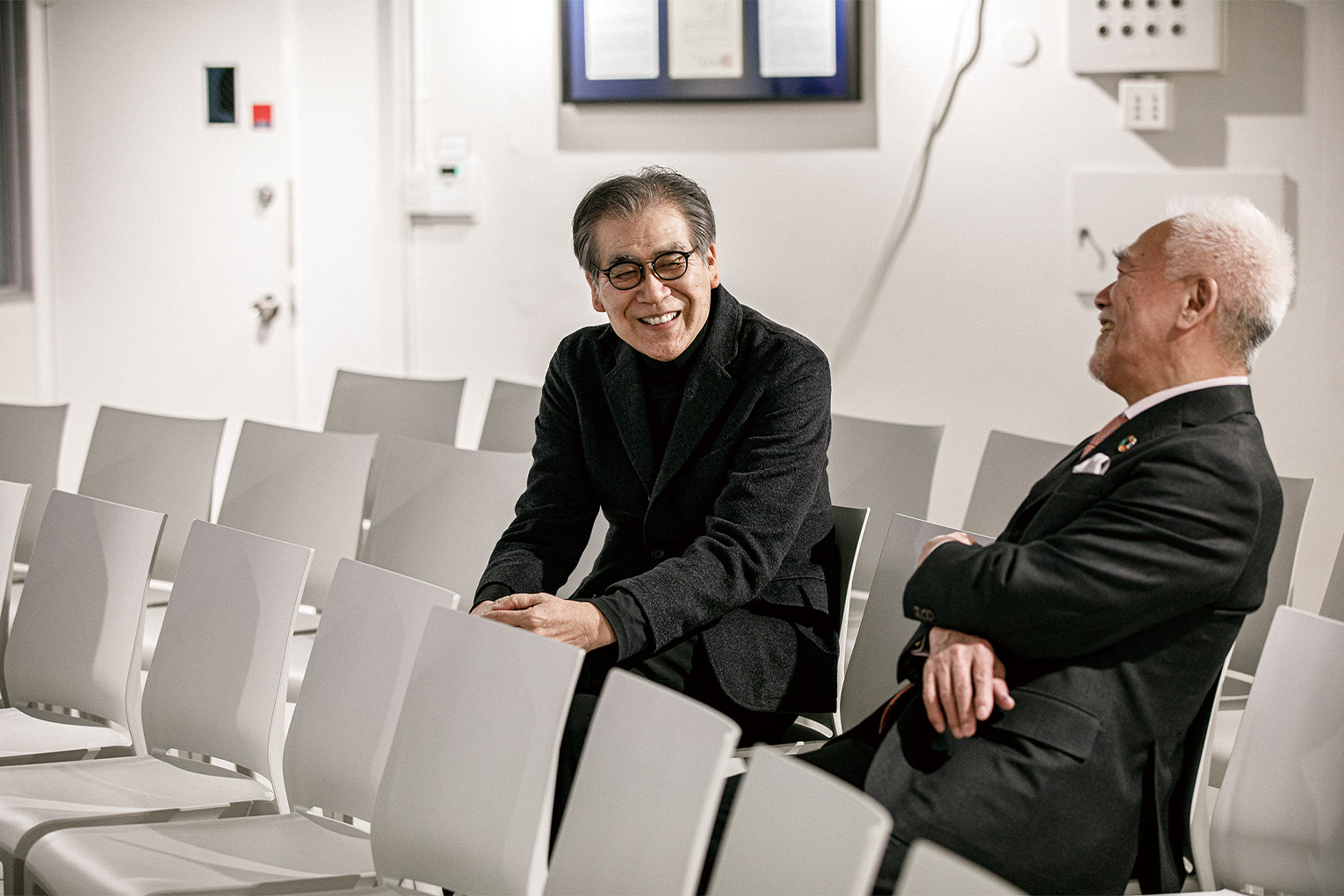
TATENO
*Laughs.* I make sure to buy all types of works such as calendars. I still keep a lot of old items as well. That said, if young Japanese artists don’t start heading overseas, they won’t be able to make a living, will they?
NANJO
I’m afraid so.
TATENO
Kengo Kuma is really popular and beloved these days, isn’t he? Japanese architects of the past live really long lives. Since we have so many renowned architects in Japan, we really should make a museum of architecture and pass on this tradition to future generations.
NANJO
It would be really interesting to see President Tateno’s door handles adorning the shops of Hermes.
TATENO
In my last conversation, I spoke with Nobuyuki Ohta and Hikaru Matsumura. They mentioned that Wacoal has an extensive ocllection of fashion-related materials and documents.
NANJO
Wacoal has one of the most impressive collections in the world. They have western clothes dating back to the 18th century.
TATENO
This is the type of thing that more Japanese companies need to start doing.
NANJO
Totally. Wacoal is impressive because they have not just created a collection of their own products but of various historical works. Fashion consists of textiles, or cloth, which makes storage quite difficult. The fact that fabric from the 18th century still exists is extraordinary.
TATENO
It really is.
NANJO
The shape of the clothing is still intact as well, making it all the more valuable. I once borrowed their collection and held an exhibit. Surprisingly, people who served in the courts of the 19th century fastened their wasts. That’s why you can’t put these dresses on modern-day mannequins. You have to first make the mannequins from scratch for the exhibit.
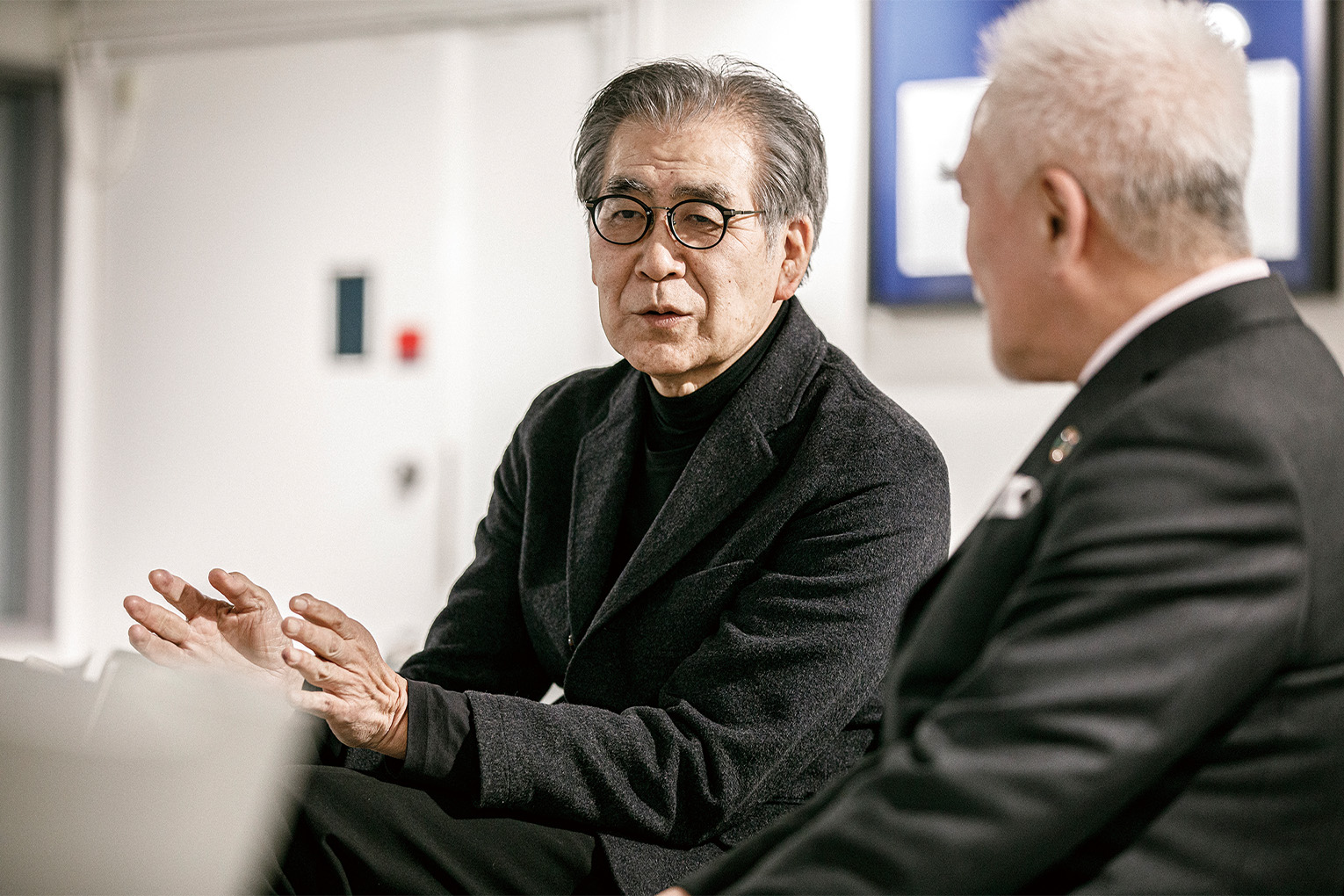
TATENO
Wow. Now that is interesting. The dresses must have been quite tight. *Laughs.*
NANJO
I was shocked. I couldn’t believe they went around wearing clothes like this day to day. *Laughs.* I really learned a lot by holding an exhibition like that.
TATENO
You’ve written a few books, if I’m not mistaken.
NANJO
I have. I wrote “From Art to Urban City: 15 Years as an Independent Curator,” which was published by KAJIMA INSTITUTE PUBLISHING and focused on public art and related topics. After that, I wrote “Asian Contemporary Art Report: China, India, Middle East and Japan,” which discusses art in Asia. My third book was titled “A Life with Art.” This book dealt with why I got involved in contemporary art. I feel like I should write another book, but I haven’t got around to it yet. *Laughs.*
TATENO
*Laughs.* I’m looking forward to that.
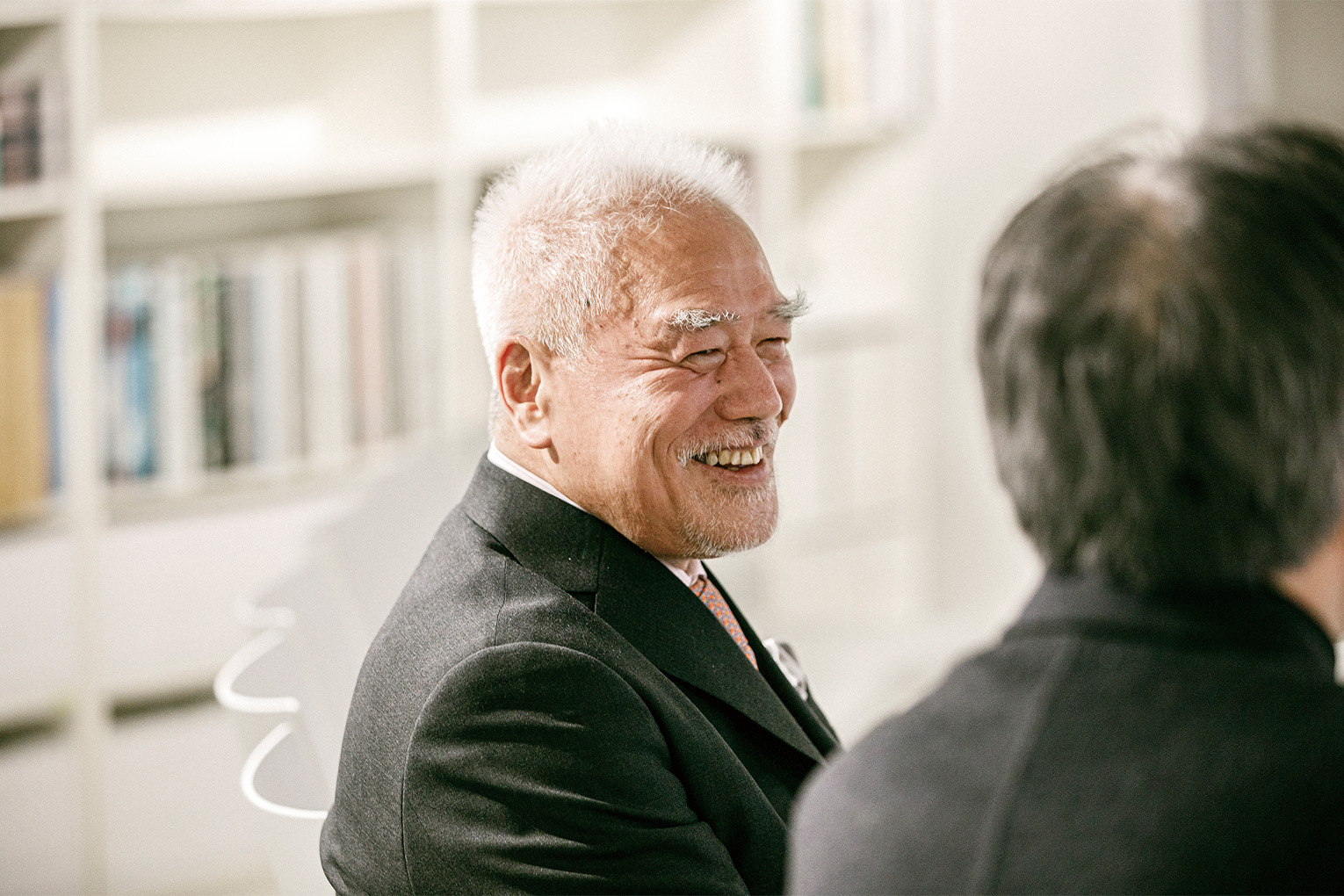
NANJO
I feel like I should communicate my experiences to younger generations in the future.
TATENO
I really hope you convey this to the youth. I think a lot of people would be thrilled to hear about your experiences if you held a few more lectures.
NANJO
That said, as the times change, I feel my solution for getting these experiences across will transform as well. Today, most information is transmitted online, and people’s working lives are changing, too. In a new environment such as this, I wonder whether what I have done up until now has all been for the best.
TATENO
I really think this is why you need to tell your story. I think a lot of young people want learn more about your life.
*Interview concludes*
Both
Thank you very much.
Planning: Naoyuki Miyamoto
Photography: Norinao Miyanishi
Writing: Fumiya Daito
Web Direction: Ryo Kijima